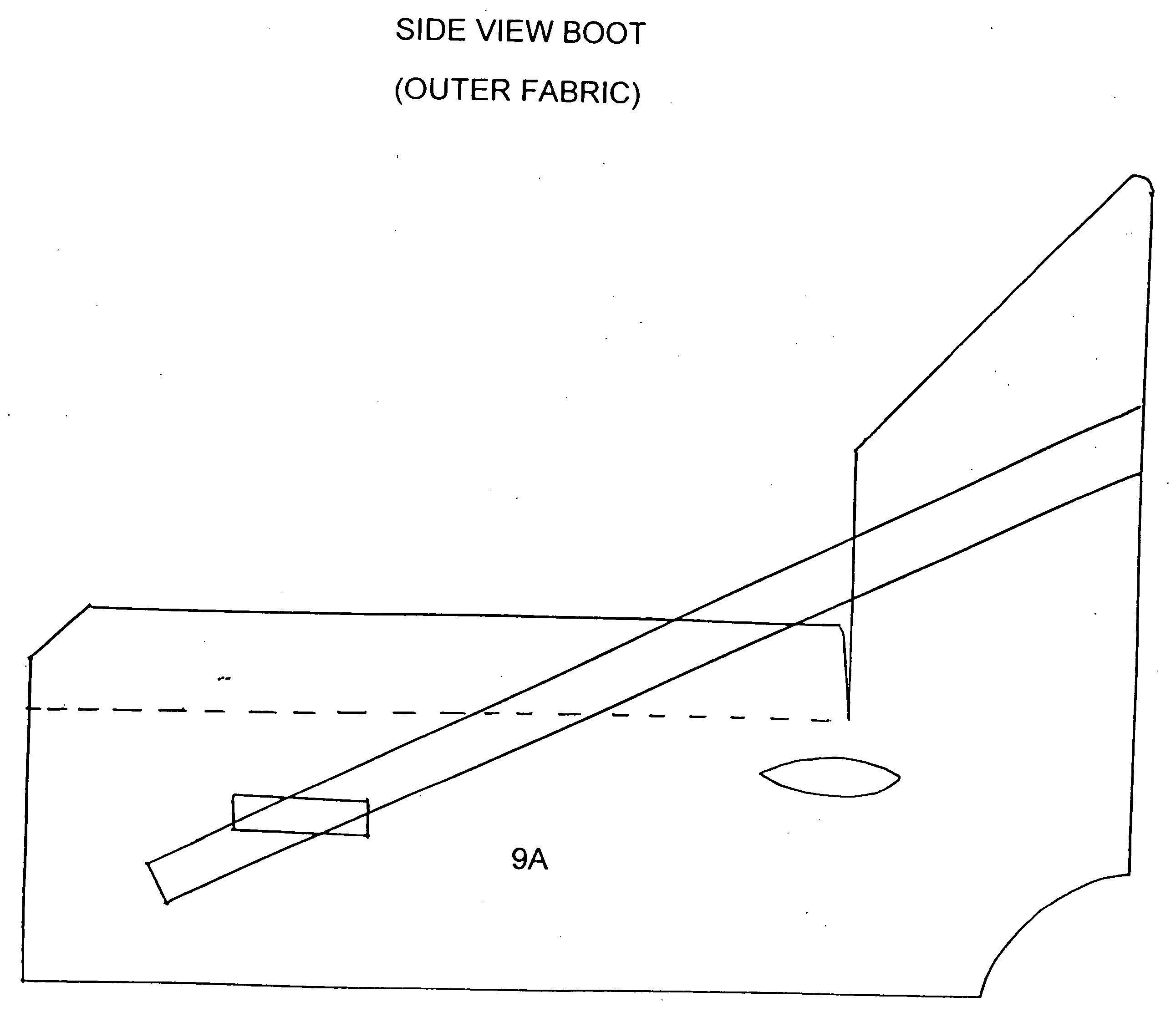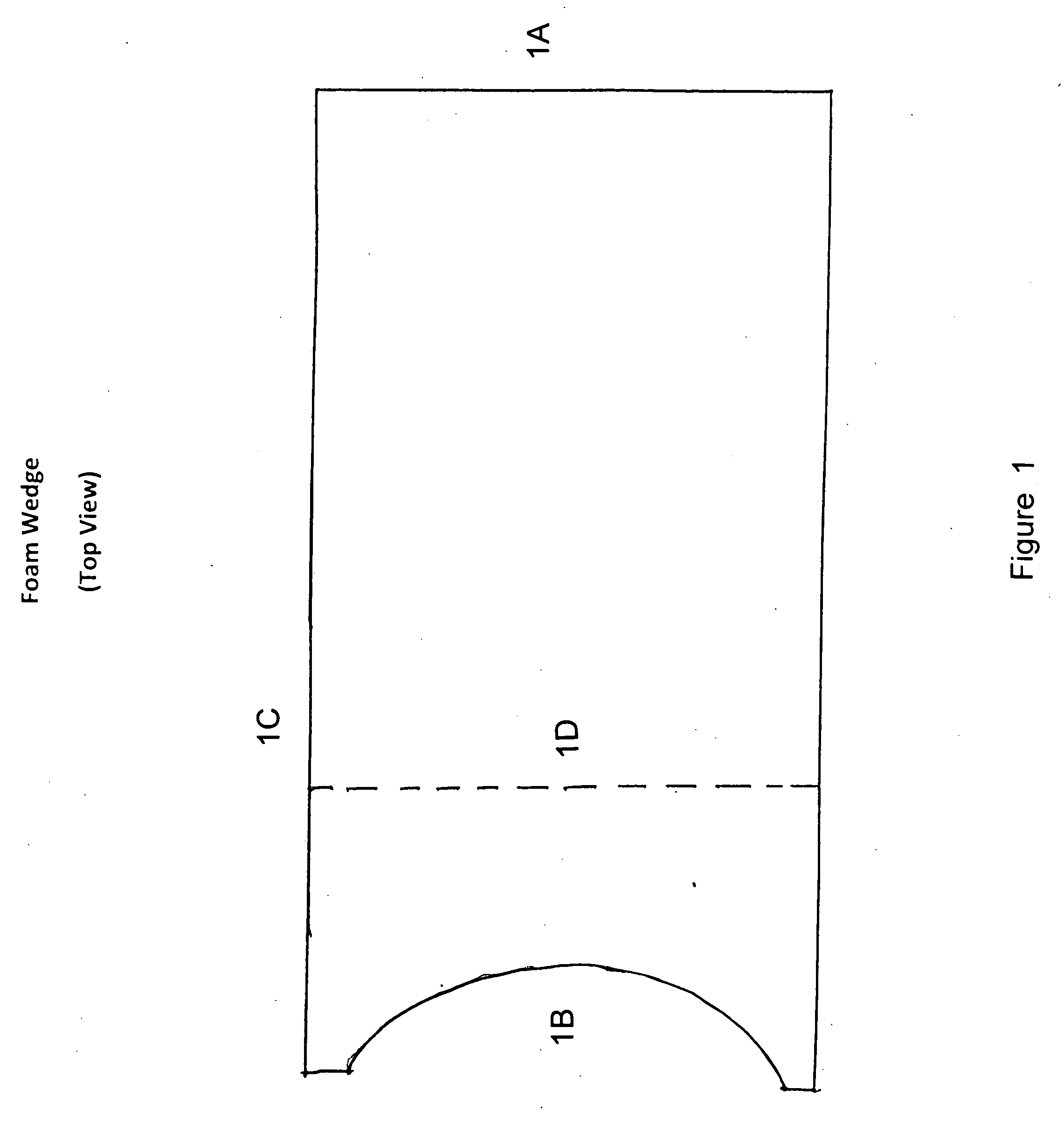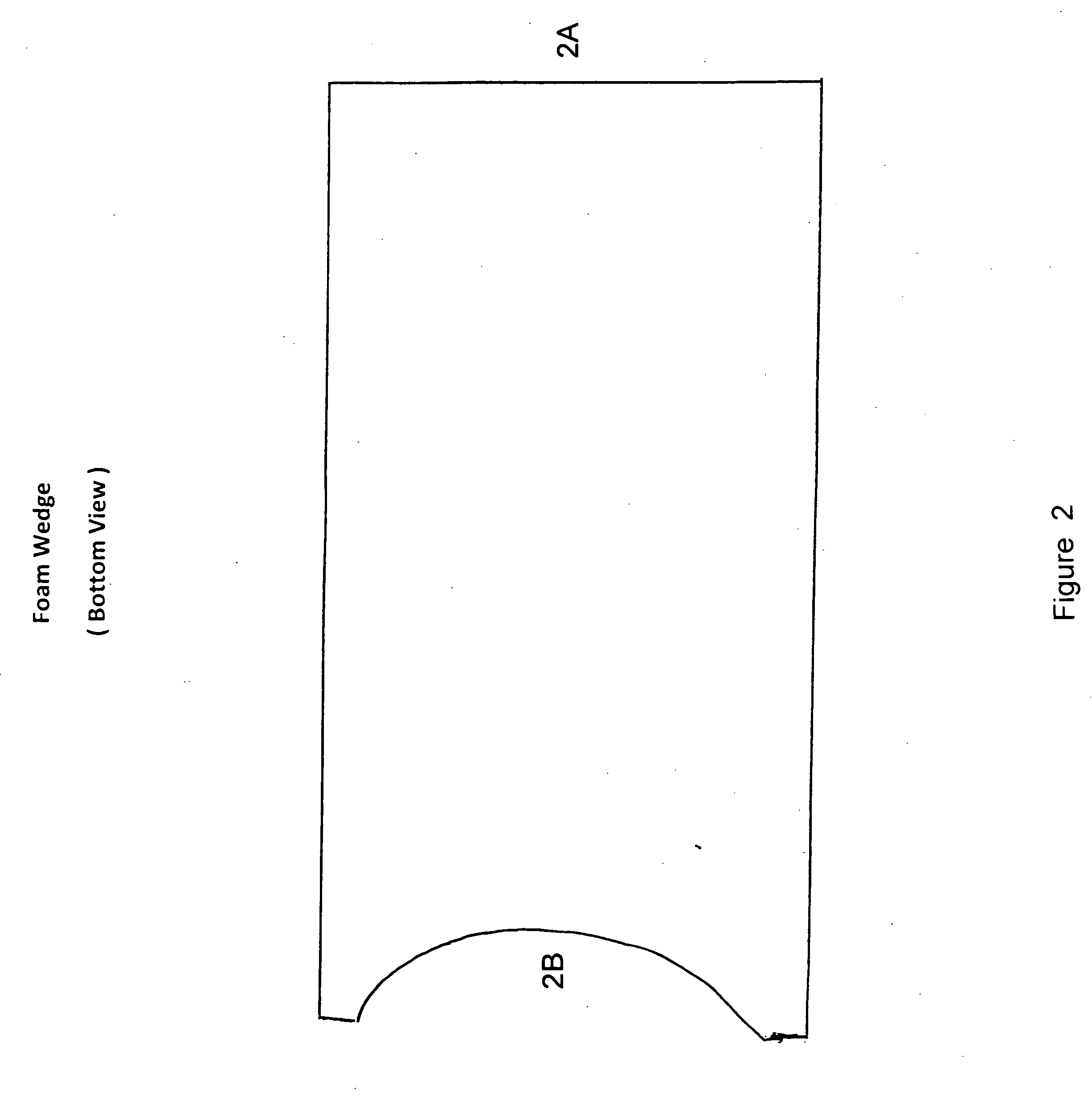Build-a-boot
a technology of building a boot and a heel, applied in the field of heel sore prevention or cure, can solve the problems of falling off, falling off, and falling off from the patient, and achieve the effect of eliminating many of the disadvantages and problems
- Summary
- Abstract
- Description
- Claims
- Application Information
AI Technical Summary
Benefits of technology
Problems solved by technology
Method used
Image
Examples
Embodiment Construction
[0040]Referring now more particularly to the drawings herein is illustrated a new and improved heel boot that utilizes several features combined to create a new and unique product.
[0041]FIG. 1 is a top view of the foam wedge. This wedge of foam is used as the base of each boot. It is wide enough (FIG. 1A) to extend to the right and left side of each patient's lower leg. Its length (FIG. 1C) extends from the patients mid calf to their lower calf just above the ankle at 1B. At the portion which extends to the ankle (1B) there is a circular cutout that ensures the heel will remain offloaded, elevated and exposed to air. The width of the boot is formulated to ensure stability of the boot. The foam wedge slopes from 1A to 1D at an approximately 30 degree angle until it reaches 1D. At 1D the slope ends and the top of the foam wedge is flat.
[0042]FIG. 2 is a bottom view of the foam wedge and illustrates that the bottom of this foam wedge is flat on the portion of the boot that would come i...
PUM
 Login to View More
Login to View More Abstract
Description
Claims
Application Information
 Login to View More
Login to View More - R&D
- Intellectual Property
- Life Sciences
- Materials
- Tech Scout
- Unparalleled Data Quality
- Higher Quality Content
- 60% Fewer Hallucinations
Browse by: Latest US Patents, China's latest patents, Technical Efficacy Thesaurus, Application Domain, Technology Topic, Popular Technical Reports.
© 2025 PatSnap. All rights reserved.Legal|Privacy policy|Modern Slavery Act Transparency Statement|Sitemap|About US| Contact US: help@patsnap.com



